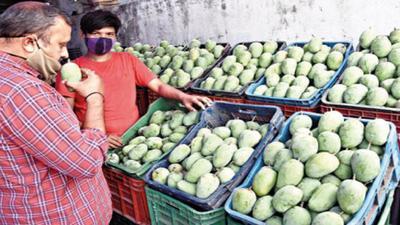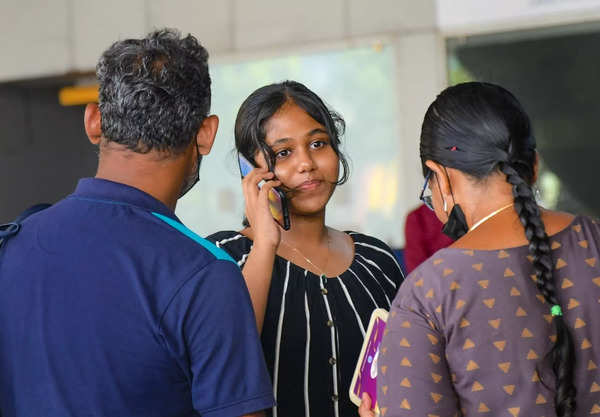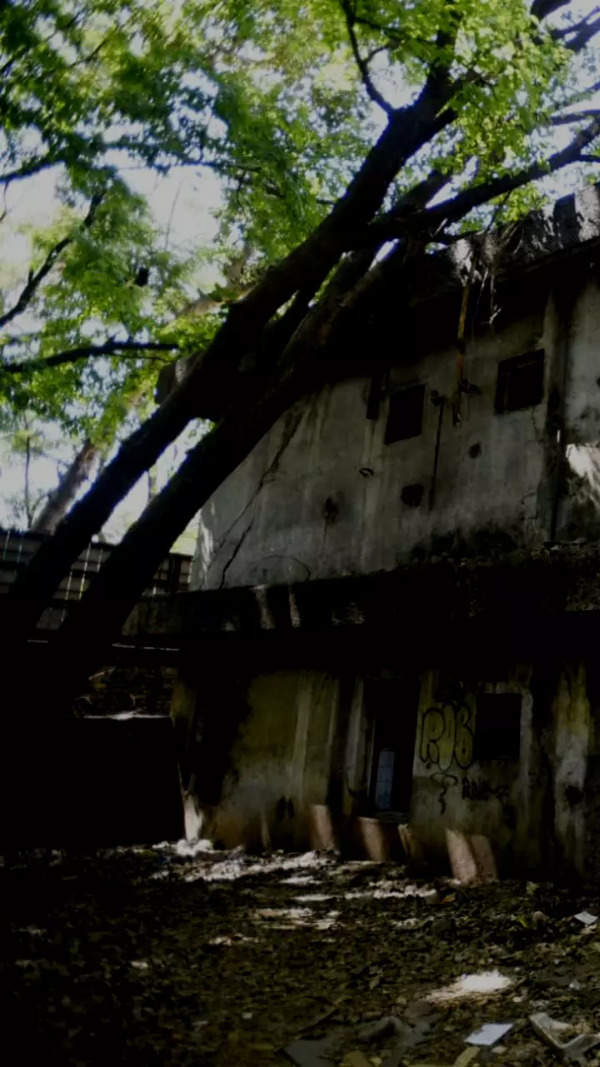- News
- City News
- surat News
- Kesar sweetly pulls South Gujarat farmers away from alphonso's tangy charm
Trending Topics
Kesar sweetly pulls South Gujarat farmers away from alphonso's tangy charm

The average plantation of kesar is rising by 500 ha in Valsad every year
SURAT: Hafoos or alphonso mangoes have undisputedly ruled South Gujarat taste buds down the ages. Kesar, growing abundantly in the neighbouring Saurashtra region, till some time ago, was never considered a competitor in matters of preference here.
However, of late, the globally popular tangy-sweet hafoos seems to have lost flavour with Valsad and Navsari mango farmers. They are now drawn by the alluring sweetness of the irresistible kesar variety, not just for its taste but also for the sustainable income.
Every year, the average plantation of kesar variety is increasing by 500 hectares in Valsad, while that of hafoos and other varieties has been cut to only 10 percent of the farms. In Valsad, of a total 37,344 hectares of mango farms, only around 30 percent of land is for hafoos plantation.
It has reduced significantly from 50 percent ar ound 10 years ago. A majority of land in farms is reserved for kesar mango, while remaining is for hafoos and some lesser-known local varieties.
The second biggest farm are a under mango cultivation in South Gujarat is in Navsari district. In Navsari, of 33,845 hectares total mango plantations, around 27,076 hectare are kesar farms. While in Surat district, around 7,696 hectares out of total 9,620 hectares mango farm s are for kesar plantations.
“Alphonso’s vulnerability to weather and diseases is the major reason behind its drop in farming. Hafoos also requires better car e and many farmers do not wish to inv est som uch time these days,” Nikunj Patel, deputy dir ector, horticulture, Valsad, told TOI. Patel added that of the average ann ual new plantation of ar ound 500 hectares, hafoos is now planted in only 10 percent area. Per hectare mango pr oduction in Valsad annually is around six tonnes.
Manager of a mango farm in Umargam, Ramesh Parmar had planted 1,800 kesar mango and 300 alphonso saplings a year ago. “While the valuation of hafoos is highest in the market, its fruit bearing starts only on alternate years.
Kesar is pr eferred by farmersnow due to regular income,” explained Parmar, who too has planted kesar variety on his own farm in Chikhli as well. “Due to its spongy tissue as well as drop in production owing to uncertain weather, farmers in Navsari and Surat have switched to kesar which occupies around 80% of the total land under mango farming,” said Dinesh Padaliya, deputy director, horticulture, Navsari and Surat.
However, of late, the globally popular tangy-sweet hafoos seems to have lost flavour with Valsad and Navsari mango farmers. They are now drawn by the alluring sweetness of the irresistible kesar variety, not just for its taste but also for the sustainable income.
Every year, the average plantation of kesar variety is increasing by 500 hectares in Valsad, while that of hafoos and other varieties has been cut to only 10 percent of the farms. In Valsad, of a total 37,344 hectares of mango farms, only around 30 percent of land is for hafoos plantation.
It has reduced significantly from 50 percent ar ound 10 years ago. A majority of land in farms is reserved for kesar mango, while remaining is for hafoos and some lesser-known local varieties.
The second biggest farm are a under mango cultivation in South Gujarat is in Navsari district. In Navsari, of 33,845 hectares total mango plantations, around 27,076 hectare are kesar farms. While in Surat district, around 7,696 hectares out of total 9,620 hectares mango farm s are for kesar plantations.
“Alphonso’s vulnerability to weather and diseases is the major reason behind its drop in farming. Hafoos also requires better car e and many farmers do not wish to inv est som uch time these days,” Nikunj Patel, deputy dir ector, horticulture, Valsad, told TOI. Patel added that of the average ann ual new plantation of ar ound 500 hectares, hafoos is now planted in only 10 percent area. Per hectare mango pr oduction in Valsad annually is around six tonnes.
Manager of a mango farm in Umargam, Ramesh Parmar had planted 1,800 kesar mango and 300 alphonso saplings a year ago. “While the valuation of hafoos is highest in the market, its fruit bearing starts only on alternate years.
Kesar is pr eferred by farmersnow due to regular income,” explained Parmar, who too has planted kesar variety on his own farm in Chikhli as well. “Due to its spongy tissue as well as drop in production owing to uncertain weather, farmers in Navsari and Surat have switched to kesar which occupies around 80% of the total land under mango farming,” said Dinesh Padaliya, deputy director, horticulture, Navsari and Surat.

About the Author
Yagnesh Bharat MehtaYagnesh Mehta is principal correspondent at The Times of India, Surat and reports on crime, politics and health related issues. He has reported on major events that affected Surat in recent years, like the floods in 2006 and bird flu outbreak in Navapur in 2005. He has also covered child labour issues in industries of Surat and on RTI. Painting and rock-climbing are his favourite leisure activities.
Start a Conversation
FOLLOW US ON SOCIAL MEDIA
FacebookTwitterInstagramKOO APPYOUTUBE










